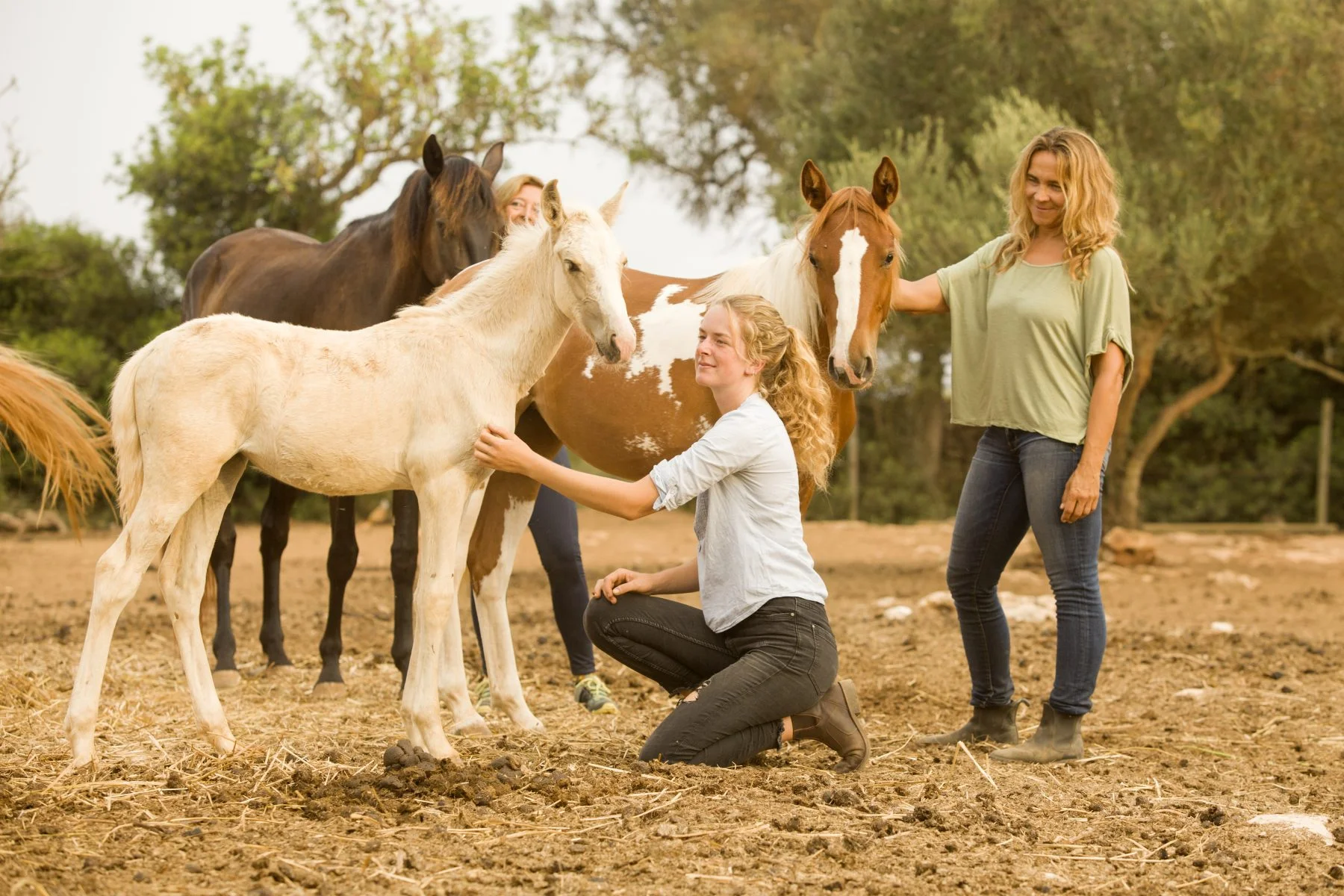Polyvagal Theory
17 Minutes
CONTENTS
Stephen Porges presented the Polyvagal theory in 1994. It is a combination of neuroscientific, psychological, and evolutionary statements about the Vagus nerve’s involvement in emotional processing, social connectedness, and response to fear. The 10th cranial nerve, the Vagus nerve, is a lengthy and meandering nerve that starts in the medulla oblongata. The medulla oblongata is a portion of the brain that is situated in the bottom part of the brain, just around the region where the brain joins the spinal cord. The Vagus is the principal component of the parasympathetic nervous system, is the foundation of the name Polyvagal Theory.
The conventional view of the autonomic nervous system is that it is divided into two parts: the sympathetic nervous system, which is more active (“fight/flight”), and the parasympathetic nervous system, which contributes to the maintenance of health, development, and recovery (“rest and digest”). By comparison, Polyvagal theory views the parasympathetic nervous system as being divided into two separate sections: a “ventral vagal system” that facilitates personal interaction, and a “dorsal vagal system” that facilitates immobilization behavioral patterns, including “rest and digest” and protective immobilization or “shutdown.”
In Polyvagal theory, Dr. Porges discusses that the biochemical situation in which our brain circuits are interpreting signals of danger in our surroundings is called neuroception. By this mechanism of neuroception, we are seeing the environment in a way that we are instinctively assessing circumstances and people to evaluate if they are safe or hazardous. As a component of the autonomic nervous system, this process occurs without us knowing consciously that it is happening. Much as we are able to inhale and exhale without having to actively urge ourselves to take a breath, we are able to examine our surroundings for signs without instructing ourselves to do so. The Vagus nerve is of special relevance throughout this process of neuroception.
In the mechanism of neuroception, either side of our Vagus nerve can be activated. Each side (ventral and dorsal) has been shown to respond in various ways when we examine and interpret information from our social interactions and environment.
What is Somatic Experiencing Therapy?
The ventral (front) half of the Vagus nerve reacts to signs of safety in our surroundings and relationships. It enhances sentiments of personal security and being properly emotionally attached to others in our social context. The dorsal (rear) side of the Vagus nerve reacts to indications of hazard. It pushes us out from interaction, out of insight, and to a certain level of self-protection. In moments when we could perceive a sign of extreme danger, we can shut down and feel immobilized, an indicator that our dorsal vagal nerve has taken over.
Porges’ Polyvagal theory proposes that the evolution of our autonomic nervous system has taken place in three stages. Porges explains that our autonomic nervous system has a hierarchy of responses, rather than merely stating a balance between the parasympathetic and sympathetic nervous systems.
Immobilization. An immobilization response is involved in what is referred to as the oldest pathway. Remember that the dorsal (back) side of the Vagus nerve is activated when we are in an unsafe and/or intense situation. To put it another way, we would freeze, numb up, and shut down in the face of our fear. When our parasympathetic nervous system kicks into high gear, our response actually causes us to freeze, rather than slow down.
Mobilization. In this response, our sympathetic nervous system is activated, which is the system that helps us mobilize in the face of a threat signal. Our adrenaline rushes us into operation as we flee danger or fight off our enemy. According to Polyvagal Theory, this evolutionary path was the second to emerge.
Social responsibility. An entirely different and newest type of response, this is based on the Vagus nerve on the ventral (front) side. Associating with others allows us to feel safe and connected, which is facilitated by the Vagus nerve’s ventral pathway, which response to feelings of safety and connection. We can feel secure, relaxed, attached, and involved when we are in this kind of environment. As we experience the world throughout our lives, there will surely be periods when we feel secure and others when we feel uncomfortable or in fear. According to Polyvagal Theory, this space is dynamic for us, and we can move between these distinct physiological and psychosocial venues within the hierarchy of responses.
Within the same day, we may feel a social connection in the embrace of a protective loved one and mobilization in response to threats such as a rabid animal, a burglary, or an intensive argument with a coworker. At times, we may interpret and react to a danger sign and analyze the situation in such a way that we feel imprisoned and are not able to escape. At certain times, our body responds to increased emotions of fear and discomfort by entering a more primordial state of immobility. Our dorsal Vagus nerve is being damaged, relegating us to a state of freezing, numbness, and, according to some studies, disconnection.
In certain moments, the danger indicators might become overpowering, and we see no feasible route out. Consider incidents of physical and sexual abuse.
When therapists pay attention to their own embodied consciousness during sessions, they might detect small shifts in their own somatic perception that can provide understanding into the patient’s experience. For example, you might feel a slight constriction in the chest and put your palm on your heart while taking a deep breath. You design your own regulation by tuning it into your own body. This can therefore be interpreted as a nonverbal request for the client to take a deeper breath. Alternatively, we may use this information to urge people to become more aware of their bodies and breath.
Deb Dana (Dana, 2018) discusses co-regulation as an engaging process that involves both the psychotherapist and the person’s social nervous systems in her book The Polyvagal Theory in Therapy. Patients with trauma, particularly those with Complex PTSD, frequently fluctuate between hypo- and hyper-arousal states. Even in the face of unpleasant feelings and physiological experiences, we can make them feel a sense of belonging. A therapist must be familiar with a vast range of arousal and affect states in order to co-regulate. People who have had developmental trauma may never have any individual who could be with them in their suffering without being nervous, shutting down, or abandoning them.
Social Cooperation and Mutual benefit. Utilizing polyvagal theory in psychotherapy includes integrating both our own and our patients’ social nervous systems. However, involving the social nervous system is not synonymous with simply providing “support.” Rather than that, involvement provides a feeling of reciprocity and mutuality in which the therapist is attentive to them in their entirety. When we offer our patients our receptivity and openness as therapists, they feel understood and accepted.
In somatic psychology, the therapists are advised to pay attention to their own feelings as the potential for transformational experiences during therapy. For instance, a therapist might describe a brief heaviness in the chest and associated melancholy as a result of a patient’s experience. This indicates that the therapist has been relocated or otherwise transformed by the customer. This act of acceptance might be immensely reparative for the individual who was abandoned as a child. The therapist has demonstrated to them that they are significant, their participation is felt, and they make a difference—all because they impacted the therapist.
Rupture and Restoration. In psychotherapy, Polyvagal theory is based on a relational data model that acknowledges that we all make bad decisions occasionally. Inevitably, we will misinterpret our patients, look at the watch at the incorrect moment, or utter something hurtful unintentionally. Aren’t we all human? Small breaches in therapy may present healing chances. Recognizing these vulnerable moments can provide a counterpoint to experiences as a child in which relational ruptures were never resolved.
When a client grows up with an uninvolved and absent primary caregiver, their basic needs to be welcomed, loved, and understood are disregarded. Additionally, if abuse was persistent, there might have been no escape from a hazardous situation. When caretakers were deregulated, the patient may have experienced prolonged periods of severely disturbed states.
Additionally, an accumulation of mismatched moments throughout therapy can lead to a feeling of perplexity, dissatisfaction, or alienation. Both patient and therapist may reenact harmful patterns from their own pasts, undermining the confidence of patients in the therapist. If we as therapists do not take the time to examine our own cognitive dissonance, we risk accidentally pushing our clients away or making them feel unwanted. For instance, our uneasiness may be transmitted nonverbally by our body language, such as subconsciously angling our body away from a client or using a tense tone of voice. Unfortunately, over time, the collection of micro-aggressions might result in a loss of trust in therapy.
What are Psychodynamic interventions?
We can strengthen our self-awareness of our own relationship histories and relational learnings through personal reflection, monitoring, or treatment. These interactions might serve as triggers for us to address our own prior wounds. When we take full responsibility for our part in the interaction, we have the opportunity to mend points of disconnect and reclaim our patient’s trust. Relationship ruptures and subsequent restoration teaches us all that interpersonal issues can be resolved. We discover that we are capable of navigating our way through difficult separation situations. Finally, we discover that we are capable of coping with these pressures and emerging stronger.
A Basis for Acceptance. In psychotherapy, the Polyvagal theory is utilized in various forms. Accepting clients (and ourselves) as they (and we are) requires us to apply Polyvagal theory in psychotherapy. This acceptance-based basis serves as the cornerstone for transformation and growth. As a result, a mutually sustaining environment of empathy develops. We, too, have the chance to grow; our work with clients has the potential to transform us.
The Vagus nerve system functions as a counter to the flight-or-fight system and can cause our bodies to relax. It is a cranial nerve that connects the brain to the rest of the body. The Vagus nerve is an important component of how our bodies and minds work; without it, we will not be able to do fundamental activities, and activating it can provide significant health benefits.
Long, deep, and steady abdominal breathing is one of the most effective strategies to enhance the Vagus nerve’s healthy function. Breathing exercises might help you change your focus away from pain or stress. One thing at a time is processed by the human mind. You’re not focused on the source of stress if you concentrate on the pattern of your breathing.
When we expect any type of stress, we tend to stop respiration and hold our breath. Breath-holding triggers the fight/flight/freeze reaction, which can lead to increased pain, rigidity, stress, or panic.
- Breathe deeply through the nose and exhale through the mouth to practice deep breathing.
- Slow down your breathing (try taking 6 breaths per minute).
- Deepen your breathing by inhaling deeply from your belly. As you inhale, imagine expanding your abdomen and spreading your rib cage.
- Exhale for a longer period of time than you inhale. The relaxation reaction is triggered by exhaling.
The following are some other ways to stimulate the Vagus nerve:
- Our vocal cords are activated by singing or vigorous water gargling, which activates the Vagus nerve.
- Foot massage: a firm or soft-touch might help stimulate the Vagus nerve.
- Face immersion in cold water: submerge your forehead, eyes, and at least 2/3 of both cheeks in cold water. The Vagus nerve is elicited, which lowers heart rate, stimulates the intestines, and activates the immune system.
- Fiber boosts Vagus nerve impulses in the brain, which slows digestion and makes us feel fuller after meals.
- Laughter improves your mood, strengthens your immune system, and activates the Vagus nerve.
- We don’t have to allow tense situations to affect our brains and bodies all the time. Our Vagus nerve can be stimulated to convey a message to our bodies that it’s time to unwind and de-stress, resulting in prolonged gains in temperament, pain control, wellness, and endurance.
Stephen Porges is a professor of psychiatry at the University of North Carolina and is also affiliated with Indiana University. He founded the Traumatic Stress Research Collaboration. He is most known for coining the term “Polyvagal theory,” which analyses how visceral sensations alter the neurological system and human behavior as a result. In an interview with The Guardian, he discussed The Polyvagal theory. Here is a brief summary of the concept of Polyvagal theory given by the founder himself.
Polyvagal theory describes three distinct branches of the autonomic nervous system that have emerged from very early vertebrates to mammals. It is indeed fascinating to see how the pattern evolved. First, you have a strategy known as death mimicking or immobilization, which is a very ancient method. Then there’s a flight or fight system, as well as a mobilization system. Finally, mammals have what he referred to as a social engagement system, which can recognize safe operations and transmit them to others. The autonomic nervous system can assist in physiological restoration when sensations of safety are triggered. When faced with a life-threatening situation, you will most likely enter a dissociative condition of simulating death.
Polyvagal theory critics have pointed out that its assumptions are not backed up by actual scientific principles and research. Paul Grossman of the University Hospital Basel contends that there is no proof that the dorsal motor nucleus (DMN) is a more primordial center of the brainstem parasympathetic system than that of the nucleus ambiguus (NA) and that there is no indication that the abrupt decrease in heart rate evoked by intense emotional situations (such as trauma-related disconnection) is caused by DMN efferent action to the heart. Indeed, there appears to be no scientific proof that this reduction occurs in the first place in trauma-related dissociation.
Evolutionary biologists agree that there are significant species distinctions as to whether dorsal brainstorm centers (correlating to DMN) or ventral brainstorm centers (correlating to NA) account for parasympathetic heart rate regulation in reptiles, birds, and fish. Grossman also pointed out that Porges’ own findings on two different species of reptiles were misleading as a result of insufficient heart rate difference measurement.
Grossman’s critique does not directly address the Polyvagal theory’s clinical presumptions, but it does refute their premises. It weakens, in particular, the notion of a phylogenetic hierarchy, in which one vagal system is more ancient than the other and is thus stimulated only when the more evolved system fails (as in dissociation, or acute trauma). For over a century, it has been known that “the differentiation of the Vagus nerve’s visceral efferent column into a dorsal motor nucleus and a ventrolateral nucleus (nucleus ambiguus) is first observed in reptiles” (Ariens Kappers, ’12; Ariens Kappers et al., ’36; Addens, ’33). This disproves the Polyvagal claim that mammals are the only species with an ambiguus nucleus. Recent results in lungfish suggest that myelinated Vagus nerve fibers connecting the nucleus ambiguus to the heart follow the same path. Additionally, Monteiro et al. (2018) note that the processes [Porges] describe as unique to mammals are undeniably present in the lungfish, which is the evolutionary ancestor of air-breathing vertebrates.
Vagal tone is equated with respiratory sinus arrhythmia (RSA) in Polyvagal theory, which is thought to be associated with psychopathological characteristics. Numerous research studies have examined RSA reactions in relation to a number of aspects of psychopathology, but a comprehensive meta-analysis revealed that no clinically significant relationship exists between RSA reactivity and psychopathology. Grossman and Taylor (2005) evaluated the evidence that RSA is not a good predictor of vagal tone since it is influenced by respiratory factors and sympathetic (beta-adrenergic) impacts in addition to vagal influences.
By exaggerating the Vagus nerve’s significance in choosing between freezing and other fear reactions, the theory ignores years of neuroscientific research on the genesis of the fear responses and freeze response in large. While there is no doubt that the Vagus nerve plays a significant role in integrating and transmitting emotion-related signals between the brain and the rest of the body (a truth known well before the emergence of Polyvagal postulations; see Vagusstoff), there is no scientific proof that it has any influence over whether or not a freeze response is provoked.
Many assertions do not meet the requirements for a scientific theory from a methodological standpoint because they are devised in a manner that is too uncertain for empirical testing. For example, the specific purpose of the two purported different “vagal systems” or the “social interaction system” is not defined, nor is the alleged “face-heart connection” encoded in the ventral branch of the Vagus nerve described. Additionally, the assumptions make no attempt to explain any research results further than what Thayer’s Neurovisceral Integration Model has earlier (and more accurately) clarified.
While Porges makes reference to other brain regions reported to be associated with fear responses (e.g., the periaqueductal grey and the amygdala), he does not incorporate them into his own postulated systems. Even if the suggested anatomical distinction between the origins of the Vagus nerve in mammals and other vertebrates were confirmed by subsequent research, it would be inadequate to account for complex emotional and social-behavioral distinctions.
Additionally, Polyvagal theory coined the term “neuroception” to refer to a neurological process that permits humans and other mammals to engage in social behaviors by differentiating between secure and hazardous situations. Thus, it makes an effort to encapsulate several groups of psychological phenomena, each of which represents a sizable body of research in and of itself: emotional control, threat perception, social behavior, and fear. Countless included phenomena have known neural mechanisms, which include a variety of neural circuits, including but not limited to the Vagus nerve. The polyvagal theory makes no effort to precisely explain the mechanisms underlying any of these phenomena, resulting in an overgeneralization rather than an advancement or precision of current information.
Healing from trauma requires time and a great deal of reflection with the help of a competent mental health practitioner. However, no amount of reflection or time spent in a therapist’s office will assist a person with a serious mental health issue until they have created a good therapeutic partnership based on mutual respect and trust.
According to the polyvagal theory, it is hard to heal without a strong therapeutic relationship because, in healing, a survivor needs to feel secure and be in a trustworthy environment. One of the most essential necessities for someone who experienced trauma as a child is to know that the person they are communicating with is not just trustworthy but also not going to abandon him.
However, psychotherapy does not have to be limited to conversation therapy; it can also include music, artwork, and physical therapy, or a combination of these. Any method the therapist can engage with the overactive region of their patient’s brain and will assist them in healing. The polyvagal theory also emphasizes why it’s so upsetting for a therapist to have to leave and stop working with a victim. They cannot recover without a sense of security, and having a therapist terminate services before therapy is completed seems like rejection and/or abandonment.
Acknowledgment of the fact that another way of living exists when people are dealing with Complex PTSD (C-PTSD). You really aren’t bound to repeat your past. The polyvagal theory can be used to help you recover from C-PTSD if you follow the procedures below:
Self-Compassion: Practice compassion for yourself and your symptoms. Understand the somatic and physiological origins of symptoms and why you can’t just think your way out of traumatic responses. Learn to observe slight shifts in your body experiences and heart rate through somatic mindfulness. Recognize the indications of stress in your own life. This will enable you to act quickly before the tension becomes excessive or out of your reach. This is referred to as remaining within the tolerability window. This is referred to as remaining within the tolerability window.
Practice Attentional Control: Concentrate your attention on certain signs in your surroundings that convince you that you are secure right now. Take a look at your space. Take note of the light streaming in through a doorway, a piece of artwork, or the sensation of reading this article. You can also play music, hold something in your hand, or inhale the soothing aroma of essential oil.
Remember that every time you feel comfortable, attached to another person, or empathetic toward yourself, you are myelinating the neuronal networks of your social nervous system. Your social nervous system would become sharper as you practice developing it. One day at a time, you can alter your physiology. It will also become easier to relate to happy states and overcome protective symptoms linked with post-traumatic stress as time goes on.
The pathophysiological basis and the relapse of polyvagal response leading to anxiety include:
- Low threshold for fight/flight triggers
- Atypical state regulation– alternates unpredictably between apparently calm and highly reactive
- The limbic system triggers cravings
As a case study of the role of Polyvagal theory in the alleviation of anxiety, many people have noted the increased level of anxiety, withdrawal, and anger responses during the pandemic. While masks are (according to all medical research) critical to reducing infections, there is a drawback. Masks encourage us to breathe through the mouth. This activates the sympathetic fight/flight responses for no observable reason! Mouth/chest breathing only fills the upper lobes of the lungs, as though we were running. Nose breathing, on the other hand, comes from the diaphragm, and fills the lower lobes, activating the calming effect of the parasympathetic Autonomic Nervous System and ventral vagal responses. (Try a couple of breaths each way and you will feel the difference!). Modify the nose bridge of the mask, and discipline yourself to breathe through the nose into your belly to quell anxiety and stay in the window of tolerance.
FAQs
Is vagus nerve parasympathetic
Yes. The Vagus nerve, also known as the 10th cranial nerve, connects the heart, digestive tract, and lungs to the parasympathetic nervous system. Although it is made up of two nerves—the left and right Vagus nerves—it is usually referred to as a single entity. The Vagus nerve is the lengthiest autonomic nervous system nerve in the body, with motor and sensory fibers.
What does vagal mean
The Vagus nerve is referred to as the “vagal.” It’s a lengthy nerve that goes from the brain to the abdomen, passing through the chest. The Vagus nerve has a number of biological functions, one of which is to slow the heart rate.
HOW THE BALANCE CAN HELP WITH Therapies
The Balance RehabClinic is a leading provider of luxury addiction and mental health treatment for affluent individuals and their families, offering a blend of innovative science and holistic methods with unparalleled individualised care.
A UNIQUE METHOD TREATING Therapies
a successful and proven concept focusing on underlying causesTherapies TREATMENT LASTING APPROACH
0 Before
Send Admission Request
0 Before
Define Treatment Goals
1 week
Assessments & Detox
1-4 week
Psychological & Holistic Therapy
4 week
Family Therapy
5-8 week
Aftercare
12+ week
Refresher Visit
Therapies Insights
latest news & research on TherapiesUses Of Exposure Therapy
Exposure-based therapies include a wide range of behavioral techniques that mostly involve exposing phobic patients to feared situations.
read more
One Client at a Time: Benefits and Outcomes
Taking care of ourselves should always be a priority. Problems arise with the complexity of life. Turning into rehab, counseling, or a treatment center might be a heavy step but it is brave. It means you are putting yourself first and choosing to work on your body, mind, and soul. Treatment is not limited to mental health problems, but it also encompasses instances where we need a break too.
read more







